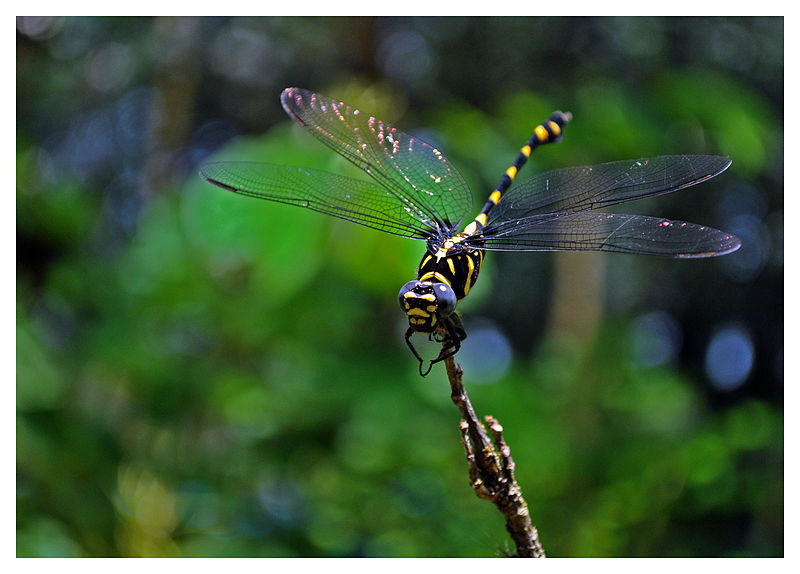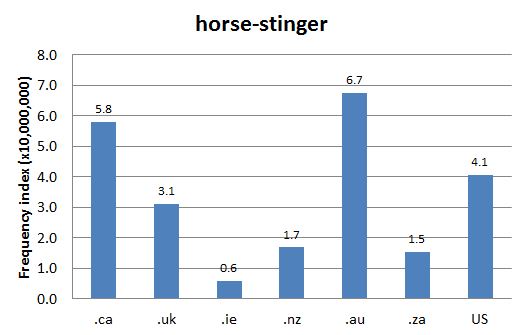DCHP-2
horse-stinger DCHP-2 (October 2016)
n. — Newfoundland, Fauna, dated
a dragonfly.
Type: 2. Preservation — The term horse-stinger is a vernacular name for "dragonfly", the large flying insect (see Image 1, see the 1966 quotation). Clarke (2010b: 106) labels horse-stinger a preservation from southwest England. Accordingly, the term is marked as dialectal English in American English (see W-3, s.v. "horse-stinger") and the earliest attestation in OED-3 is from a British source in 1773 (see OED-3, s.v. "horse-stinger"). The term horse-stinger is used to portray English versus Irish settlement patterns in Newfoundland; Paddock (1984: 15) shows that English-settled areas of the island predominantly use this British term, whereas the Irish-settled southern Avalon Peninsula uses "devil's darn(ing) needle" or "devil's needle" from Irish English (Clarke 2010b: 120). The term has enjoyed longer use in Newfoundland than in mainland Canada. Today the term is marked as dated; it is preserved in place names (see the 2012 quotation).
The term is one of the traditional North American variables in dialectology (see, e.g., DARE). The name horse-stinger is said to derive from their habit of lingering around horses and cattle (see the second 1975 quotation). Moreover, it is often discussed as a misleading name rooted in superstition, as they are indeed harmless insects (see the first 1975 quotation) that are "incapable of stinging or biting" (see the 1994 quotation). As Chart 1 shows, horse-stinger is quite frequent in Canada and the US, only outnumbered by Australia. In the North American context, the term is, by virtue of frequency and certain Canadian tendencies towards preservation (Dollinger 2015a, 2015c), perhaps more Canadian than American.
See also DNE, s.v. "horse-stinger", DARE, s.v. "horse stinger", EDD, s.v. "horse-adder".References:
Images:

Image 1: A dragonfly, or horse-stinger. Photo: Renjithcr
Chart 1: Internet Domain Search, 9 Jun. 2014
